Last Metro Journey: Burjuman to Expo 2020
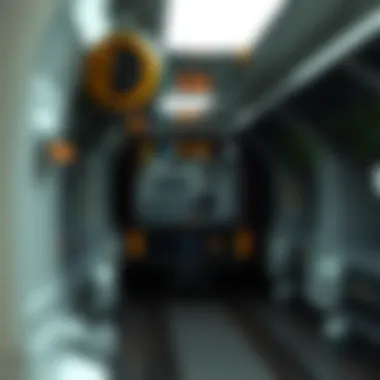
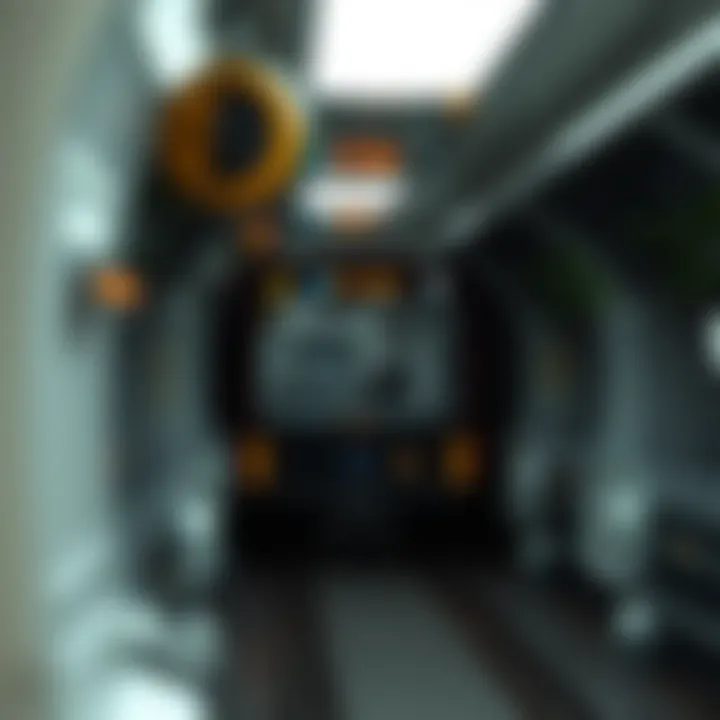
Intro
In the bustling landscape of Dubai, where skyscrapers touch the sky and innovation is a way of life, navigating the public transport system is often a rite of passage for many expatriates, investors, and tourists alike. As major events unfold, knowing the ins and outs of the metro system becomes increasingly important. The last metro ride from Burjuman to Expo 2020 is not just a simple commute; it’s a journey laden with anticipation, cultural exchange, and practical significance.
This article does more than detail the last train's schedule. It delves into the heart of what this route represents for both locals and visitors. The ease of access to major events can influence property trends, create new avenues for investment, and enhance the overall experience of navigating life in a dynamic city. Understanding the logistics behind this metro route can not only improve your commute but also offer insights into Dubai's evolving real estate landscape.
The relevance of this topic can hardly be overstated. With Expo 2020 attracting a global audience, the flow of traffic in and around Burjuman becomes a focal point for discussions about infrastructure, accessibility, and the future of public transport in the region. Commuters, including daily workers and event attendees, will find the information provided here essential for planning their journeys, maximizing their time, and understanding the broader implications for real estate and investment opportunities in the vicinity.
So, let's dive deep into the nitty-gritty of navigating this last metro trip from Burjuman to Expo 2020.
Preamble to the Metro System in Dubai
The metro system in Dubai serves as a crucial backbone for urban mobility, linking communities, commercial districts, and major attractions. Its significance extends beyond mere transportation; it represents a forward-thinking approach in the context of rapid urbanization and population growth. The metro facilitates efficient travel for both residents and visitors, making it an essential part of the socio-economic fabric of the city.
Overview of Dubai's Public Transport
Dubai's public transport landscape is a blend of modernity and functionality. The Roads and Transport Authority (RTA) oversees this extensive network, which includes buses, water taxis, and trams, alongside the metro. The metro itself boasts a commendable 90 kilometers of electrified track, with several lines operating smoothly. Key stations like Burj Khalifa, Mall of the Emirates, and the Dubai Marina are not only transport hubs but also focal points for business and leisure activities.
Navigating through the metro system means avoiding the infamous traffic jams that tend to plague the city, particularly during working hours. With trains arriving every few minutes, passengers can find a convenient and swift way to reach their destinations. Notably, the metro operates from 5 a.m. to midnight during weekdays and from 5 a.m. to 1 a.m. on weekends, which makes it an appealing option for those who need to travel at off-peak hours.
Another remarkable aspect of Dubai’s transport initiatives is their focus on sustainability. The metro is designed as an eco-friendly option, offering energy-efficient solutions that contribute to the city's goal of reducing carbon emissions.
Importance of the Metro Network
The importance of the metro network in Dubai can't be overstated. It plays a crucial role in alleviating traffic congestion, providing a reliable mode of transport for millions. The metro is particularly vital during major events, such as Expo 2020, where the influx of visitors necessitates a well-coordinated transport system.
For investors and expatriates alike, understanding the metro's role can open up opportunities in terms of real estate and business ventures. Areas surrounding key metro stations, such as those along the route to Expo 2020, tend to see a surge in property values and commercial activities.
Additionally, the metro enhances the quality of life for residents by offering safe, clean, and affordable transportation. Commuters appreciate the convenience of moving throughout the city without relying on personal vehicles, thus promoting a more vibrant urban culture.
"The metro isn’t just a transit system; it’s a lifeline that connects diverse communities and cultures in Dubai."
As we dive deeper into this article, we will explore the specific journey from Burjuman to Expo 2020, shedding light on landmarks, timings, and how this journey influences both inhabitants and visitors alike.
Understanding the Metro Route from Burjuman to Expo
The journey from Burjuman to Expo 2020 is not just a simple transit; it’s a passage that connects various aspects of life in Dubai. Understanding this metro route is pivotal for commuters, event attendees, and even new residents grappling with Dubai's vast urban tapestry. This route serves as a lifeline, facilitating mobility and access to one of the biggest events in the region's recent history, thus playing a critical role in shaping the public transport landscape.
Shifting our focus to the broader implications, recognizing the intricacies of this metro link can help commuters plan their travels more effectively, avoiding the hustle and bustle that tends to accompany large gatherings. Additionally, it allows visitors to navigate and appreciate the unique offerings along the way—be it attractions, eateries, or important landmarks—which in itself could enrich their experience.
As we delve deeper into this subject, we will explore significant landmarks, the duration of the journey, and where to catch your last train, emphasizing practical considerations for everyone, from tourists eager to explore Expo 2020 to investors seeking insights into developing areas.


Key Landmarks Along the Route
The metro journey from Burjuman to Expo 2020 touches several noteworthy landmarks, making it a visual treat. Here’s a glance at some attractions you might encounter:
- Burjuman Centre: Starting point, surrounded by shops and eateries, perfect for a quick bite before hopping on.
- Al Fahidi: Noteworthy for its traditional architecture and proximity to the Dubai Museum, reflecting the city’s heritage.
- Dubai Frame: As you approach Zabeel Park, this architectural marvel frames the old and new Dubai, ideal for a photo opportunity.
- Trade Centre: A bustling area packed with corporate offices and exhibition spaces, gradually transitioning towards the Expo.
- Expo 2020 Site: An iconic structure set to host the world, showcasing innovations, technologies, and cultures from across the globe.
This route is not just a means to an end; it becomes a mini adventure, introducing the essence of the city through its remarkable landmarks. Exploring these points along the ride provides a deeper contextual understanding of why Dubai captivates the world.
Duration of the Journey
When it comes to the travel time from Burjuman to Expo 2020, you can expect a commendable pace. The entire journey typically takes about 30 minutes. This duration can fluctuate slightly depending on how busy the metro is, particularly during peak hours.
Setting out on the metro can offer a stress-free alternative to navigating the roads, especially during mega events. Riding smoothly through the city's heart, the transit is generally punctual. Notably, the trains run frequently, meaning that if you miss one, the next one won't be long in coming—usually within 7 to 10 minutes.
With the duration being manageable, it encourages both spur-of-the-moment trips and planned outings, allowing users to tailor their schedules with confidence. This metro experience encapsulates the efficient nature of Dubai’s public transport, promoting easy access to one of the most significant cultural and technological showcases of our time.
Last Train Schedule and Timings
In any urban environment, the last train schedule holds particular significance, especially in a bustling city like Dubai, where time is often of the essence. For commuters and attendees at events like Expo 2020, understanding the last train timings can considerably influence their experience. Missing the final ride could lead to unexpected costs or inconveniences, which makes this information all the more crucial.
Exploring the Final Departure Times
The last metro train leaves Burjuman heading to Expo 2020 around midnight on weekdays. This timing allows those engaged in the vibrant nightlife or attending late events to have a convenient means of transport. On weekends, the final departure offers a brief extension, typically around 12:30 AM, catering to the late-night crowd. Knowing these specific times can prepare you better for your outings, ensuring you make the most of your visit without the anxiety of reaching back home late.
- Weekdays Last Train: 12:00 AM from Burjuman
- Weekends Last Train: 12:30 AM from Burjuman
Furthermore, if you plan on attending a late-night program, it’s prudent to keep an eye on Expo 2020's schedule as some events could extend beyond general timings. This slight adjustment on weekends could create an extended phase of relaxation for visitors, allowing them to immerse fully in the festivities without the constant pressure of time hanging over their heads.
Weekend vs Weekday Schedules
The discrepancy between weekday and weekend schedules speaks volumes about how the metro system in Dubai adapts to different commuter needs. On weekdays, the metro operates on a tighter schedule, with trains running more frequently during peak hours but tapering off as bedtime approaches. This setup is reliable for those who commute for work; however, it naturally restricts late-night possibilities for others.
With weekends, the last train schedule reflects a more laid-back approach. It allows for a bit more flexibility as the city gears up for weekend events. Here are some critical contrasts:
- Weekdays: Trains may come every 7-8 minutes during peak times but more sporadically in the late hours.
- Weekends: The service is a touch more forgiving, spreading out the trains to cater to late-night revelers, encouraging them to explore Dubai’s many jewels.
This disparity signifies that if you are an investor or someone seeking to understand this dynamic further, adapting to these schedules can help maximize your time effectively during your visits or for potential business engagements.
In essence, being aware of these details serves not merely as a convenience, but as a strategic advantage in navigating the landscape of public transport in Dubai, especially around major events.
"Public transport is not just a means to an end; it’s part of the experience in Dubai. Monitoring local schedules can boost your exploration and well-being."
To dive deeper into scheduling nuances and other related topics, consider visiting detailed resources like Dubai Metro Official Website or Wikipedia for further insights on Public Transport in Dubai.
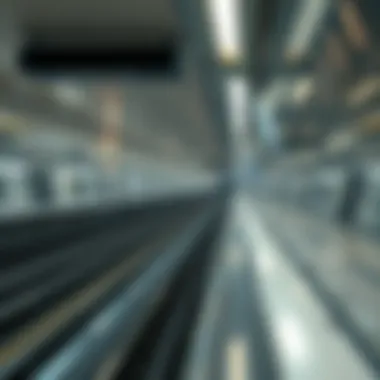
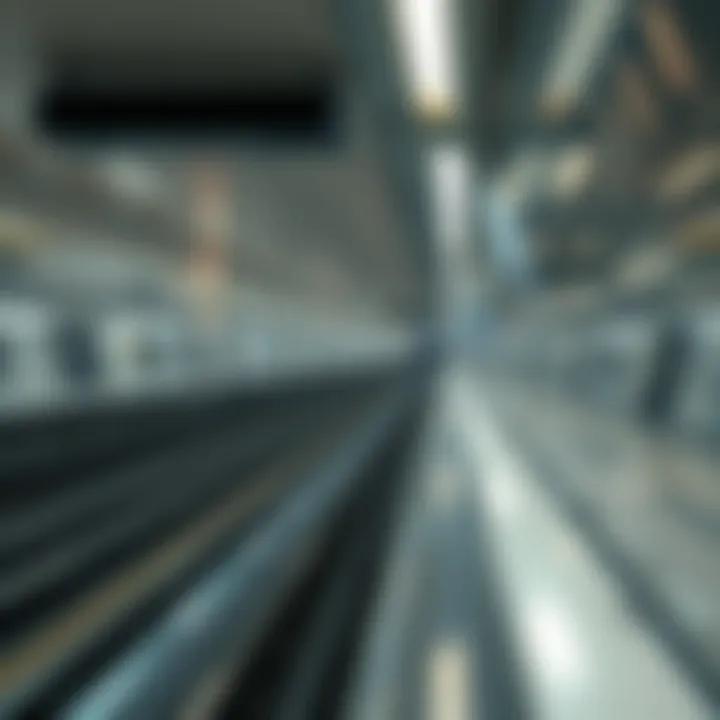
As you prepare for your journey, integrating this knowledge into your travel plans will inevitably enhance both your efficiency and enjoyment.
Commuting Insights for Expo Visitors
Understanding how to navigate public transportation, especially during a significant event like Expo 2020, is crucial for both regular commuters and first-time visitors in Dubai. The last metro service from Burjuman to Expo 2020 is not just a travel option; it serves as a lifeline for those keen on making the most of their visit. This section delves into who should be considering this service and what alternative transportation options are available, ensuring attendees have a seamless experience reaching their destinations.
Who Should Utilize the Last Train
The last train from Burjuman to Expo 2020 is ideal for various groups of people. Primarily, event attendees who plan to enjoy late-night attractions will find this option most beneficial. Many visitors might be unaware that the Expo extends beyond traditional timeframes, offering a vibrant atmosphere well into the night. Those attending conferences or exhibitions might also seek the last train to avoid the stress of rushing home.
Residents living near Burjuman or Expo should also consider using the metro. For instance, young professionals or families attending the Expo can take advantage of this useful option, skipping the hassle of parking or street congestion. Furthermore, the late timings cater to visitors who might be coming from distant neighborhoods or side streets, extending access to the event for everyone.
Alternative Transport Options
While the last metro train serves as a reliable means of transportation, visitors also have several alternative options to consider. Here are some popular choices:
- Taxis*: Easily available throughout Dubai, taxis offer a direct route to Expo 2020. The availability is quite good, and they can be hailed at taxi stands or summoned via dedicated apps.
- *Ride-Sharing Apps: Services such as Uber and Careem are prevalent in Dubai. They provide a flexible and personalized travel experience, although they might be pricier than taking the metro.
- Buses: Dubai's extensive bus network can effectively connect to Expo. Visitors might find this option economical, but they should be mindful of the schedule as services can be less frequent late at night.
- Bicycles: For the eco-conscious, biking could be a pleasant option. Dubai offers cycling paths, mainly in areas surrounding key venues like Expo. It’s an invigorating way to experience the city.
Each transportation method has unique advantages, and understanding these can help visitors plan better. A well-thought-out travel strategy improves the overall experience at Expo 2020, emphasizing the importance of knowing all available options.
Impact of Expo on Local Public Transport
The arrival of Expo 2020 has brought a significant shift in the dynamics of public transport in Dubai. For locals and visitors alike, understanding this shift is crucial as it influences daily commutes and the overall travel experience in one of the world's most vibrant cities. The expo, drawing millions of visitors, led to a surge in passengers relying on public transport, particularly the metro, which serves as a lifeline for reaching major venues.
Increased Passengers and Infrastructure Strain
As the gates of Expo 2020 swung open, the metro witnessed an influx of commuters. Imagine an average day at Burjuman station, where the usual crowd doubled or tripled! This sudden increase did not merely augment the number of passengers but also exerted a considerable strain on the existing infrastructure.
- Metro Capacity Challenges: The metro system, previously designed to cater to a certain flow of traffic, now faced overcapacity issues. This influx caused longer waiting times and crowded trains—factors that may frustrate even the most patient traveler.
- Impact on X factors: Services such as maintenance and cleaning became more demanding amidst the rush. Authorities had to scramble to ensure that trains remained on time, and an effective flow of passengers was maintained.
The challenge of accommodating increased passenger flows highlighted crucial gaps in planning and foresight. It pushed transport planners to rethink and optimize resource allocations to adapt to the sudden spike in demand.
Metro's Response to Rising Demand
In light of this unprecedented demand, the metro system took several steps to adapt. These responses were critical not only for maintaining efficiency but also for ensuring a smooth experience for expo attendees and regular commuters alike.
- Extended Operational Hours: Initially, the metro's schedule was overhauled to accommodate the thousands pouring in from all corners of the city. Extended hours for the last trains meant that commuters had more flexibility, allowing visitors to enjoy the events without the looming worry of missing the last ride.
- Additional Trains and Staffing: To tackle congestion, the metro service introduced additional trains during peak hours. More staff were deployed to ensure quick boarding and assess crowd management, making a notable difference in streamlining operations.
- Real-Time Updates: Leveraging technology, Dubai’s metro began providing real-time updates through various platforms. Passengers could receive live notifications about delays, train arrivals, and crowd density, thus enabling informed travel decisions.
Planners are now equipped with insights from this event, which can shape future public transport strategies in Dubai. The lessons learned paint a picture of a thriving metro system that can evolve and adapt to meet the needs of an ever-growing urban landscape.
"Expo 2020 serves as a catalyst for evolution in Dubai’s transport landscape, marking a chapter filled with opportunities and challenges alike."
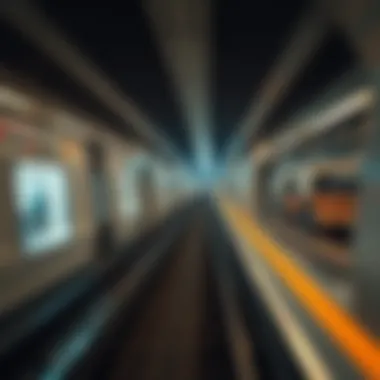
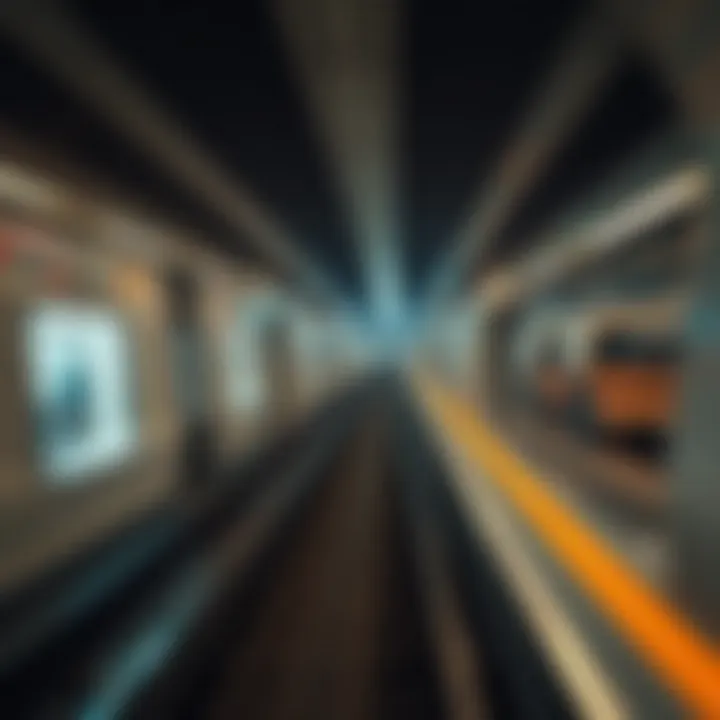
Addressing these challenges is not merely about immediate fixes but rather a long-term vision for public transport that aligns with Dubai's ambitions as a global city. Further developments in metro infrastructure will surely follow this remarkable event, influencing the habits of residents and visitors for years to come.
Real Estate Developments Near Expo Site
The rapid pace of transformation in Dubai often draws one’s attention to the significant real estate developments in close proximity to the Expo site. As investors, agents, and analysts take a keen look at this vibrant area, they uncover layers of potential that promise to reshape the urban landscape. This exploration is not just about buildings; it’s about the lifestyle and economic opportunities that come with them, particularly in light of major events like Expo 2020.
Investing Opportunities Arising from Expo
The Expo 2020 event has acted like a magnet, attracting investments and revitalizing interest in real estate around the site. Here’s what aspiring investors should take note of:
- Rising Property Values: Post-Expo, many experts believe property values will continue to surge, thanks in part to the increased demand for housing and commercial space.
- New Developments: Significant new developments are already in the works, including mixed-use complexes and luxury residential projects that cater to both expatriates and local buyers.
- Government Support: The UAE's government has shown steady support for infrastructure projects, making it a conducive environment for real estate ventures. Initiatives to improve public transport and access are key.
- Long-Term Rentals: As the area becomes a hub for business and tourism, the demand for rental properties is expected to rise, making it a smart move for investors to consider long-term rental opportunities.
Investing now, with the insight that Expo 2020 has put a spotlight on this region, could yield high returns down the road. A well-informed decision in property investment can sometimes lead to golden opportunities that come once in a lifetime.
Lifestyle Enhancements in Surrounding Areas
With new developments come lifestyle shifts that enhance the living experience for residents and visitors alike. Here are some of the enhancements to expect:
- Improved Amenities: Upcoming neighborhoods are focusing on providing excellent amenities like parks, recreation centers, and shopping districts, elevating quality living standards.
- Cultural Hotspots: The Expo's cultural flair rubs off on local developments, introducing art galleries, theaters, and public art spaces that create vibrancy in everyday life.
- Proximity to Major Landmarks: Living near the Expo site allows residents quick access to global pavilions and exhibitions, fostering a unique lifestyle that blends leisure with cultural experiences.
- Sustainable Developments: Many new projects are being designed with sustainability in mind, featuring green spaces and energy-efficient technologies, catering not just to modern needs but also echoing global trends in environmental consciousness.
End: The Future of Public Transport in Dubai
The Expo 2020 event has acted as a lens, magnifying the importance of an efficient public transport system in Dubai. With the growing population and increasing influx of tourists, the need for well-structured transport avenues cannot be overstated. The metro system, facing such demands, has shown itself as more than just a means of transportation; it's a catalyst for development.
The experience of navigating from Burjuman to Expo 2020 encapsulates challenges and triumphs. Patrons are now more aware of their options and the pressing importance of sustainable transport. The entirety of the event has shed light on the necessity for continued investment in public transport infrastructure. Emphasizing efficiency not just during peak seasons, but throughout the year, can solidify Dubai's standing as a global transport hub.
Lessons Learned from Expo
One striking outcome from Expo 2020 has been the realization that successful transportation planning goes hand in hand with large-scale events. One of the key lessons learned is the necessity of adaptability. The metro system had to accommodate a higher volume of passengers within a short period—a challenge that was met with real-time data and connection tweaks.
Key takeaways include:
- The importance of flexibility in scheduling.
- Enhancement of communication strategies to inform passengers in real-time.
- Improved infrastructure leading to smoother transfers between various modes of transport.
From these experiences, planners can glean insights for future installments; a concise blueprint that aids in formulation for upcoming mega-events.
Sustainable Transport Initiatives Moving Forward
In the wake of Expo 2020, it's clear that sustainability must be at the forefront of future public transport initiatives. Developers and city planners are expected to consider eco-friendliness when looking toward a sustainable urban landscape.
This could manifest in several ways:
- Electrification of public transport fleets, minimizing carbon footprints.
- Encouraging the utilization of non-polluting vehicles alongside the metro system.
- Collaborating with tech companies to harness apps for promoting shared mobility solutions, reducing road congestion.
It's essential to push for an integrated, sustainable public transport vision that is not solely confined to expanding metro lines. The investments made now will not only cater to the current demands but also ensure the longevity and adaptability of Dubai's transport system.
Investors and stakeholders should note that the future of public transport in Dubai hinges on addressing both the immediate needs of its growing populace and balancing that with environmental priorities.
Ultimately, the events around Expo 2020 could serve as a pivotal chapter in Dubai's public transport narrative. With adequate planning and execution, this chapter may lead to an inspirational story of sustainability and efficiency for cities around the globe.



